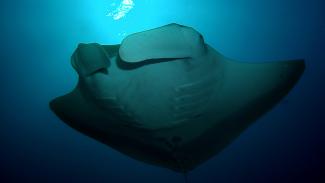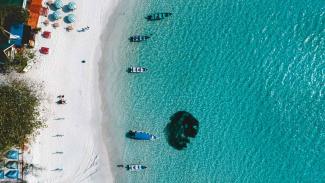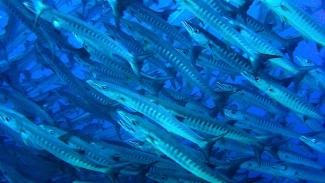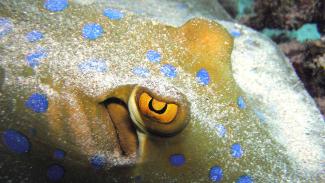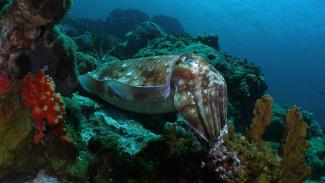Your guide to the outstanding wreck diving of Rabaul
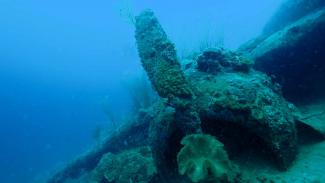
While there are many WWII wrecks dotted around PNG, the Rabaul area undoubtedly has the most.
Situated on the eastern tip of New Britain, Rabaul is a large natural harbour that was the main naval base of the Japanese during the war. The area is also a very active volcanic region, sitting between 3 active volcanoes.
The last eruption was in 1994, which prompted the government to strip Rabaul of its title as regional capital. The town & harbour was covered in ash, to the detriment of the diving at the time. Now, the area, if not the town is recovering well.
Highlights
Best diving spots
The last eruption was in 1994, which prompted the government to strip Rabaul of its title as regional capital. The town & harbour was covered in ash, to the detriment of the diving at the time. Now, the area, if not the town is recovering well. Many of the area’s most famous wrecks lie outside the harbour and were not affected by the eruption. The volcanic nature of the region also means that the wrecks sit on black sand, making them somehow more atmospheric & dramatic.
The area has two outstanding plane wrecks - ‘Pete’s’ Bi-plane, named after the allied code name for the type of plane, and the Mitsubishi Zero. Pete’s Bi-Plane was a reconnaissance plane shot down while at anchor. She lies near the shore in 30m of water. Her three-pronged front propellor is still intact and is one of Rabaul’s most iconic images.
Mitsubishi Zero was a feared Japanese fighter plane that now lies on the north coast near Kokopo, the new regional capital. The plane, which was one of the last ever made, is in excellent condition. On the plane’s left, you can see a distinct row of bullet holes from an attack and it is even possible to sit in the cockpit.
Hakkai Maru is a large 130m Japanese support ship, now considered to be one of the area’s very best wreck dives. Sunk on 17th January 1944 by an American skip-bomb, she now lies in 25-30m of water. The combination of her huge size, accessible depth & impressive marine life means this is a truly superb dive. At the stern, you can find an impressive cannon, which is now covered in coral growth. The ship’s clock, which stopped at 17:20, the time of impact, can be found in the local museum.
The Yanyuri Maru is a similar sized ship that was sunk on the very same day. While equally impressive, she lies in deeper waters and can only be reached by experienced divers. The Italy Maru is another superb deep wreck dive for more serious wreck divers.
More accessible is the smaller Manko Maru, which sits on around 25m of water. This wreck was sunk by an allied attack and the evidence is plain to see in the wreck's twisted fuselage. Penetration is possible on this wreck and she is now home to a wealth of marine life.
George’s Wreck, found more recently and as yet unidentified, is another excellent dive. She sits upright, close to shore on a steep slope. Her bow is at just 12m, while her stern lies in 60m of water. The wreck is in superb condition and the healthy array of corals add plenty of colour. Again, marine life is plentiful.
There are also a number of very good reef dives in the area, particularly around Wanton Island - formerly a POW camp but now fortunately just an idyllic island. The Hump is another great reef dive. On the top of this submerged volcano, a garden of huge seafans sway in the current and plenty of pelagics cruise by.
Just off the shore in Rabaul Harbour is a precipitous drop-off known as Submarine Base, which makes for an excellent dive. The site got its name as this drop off close to shore was used by Japanese submarines to drop-off their cargo without revealing their position.
When to dive
The best time to dive Rabaul area is between May & October. The wettest months are December to March.
Getting there
Rabaul is a 2 hour flight from Port Moresby, Papua New Guinea's capital. The airport is actually 20km away from Rabaul itself in Kokopo, the region's new capital. There are also regular Air Ninguini flights to & from Kavieng & Hoskins.
Activities
There is plenty to do around Rabaul. There are hundreds of old war relics & tunnels to explore, plenty of trekking opportunities including climbing a volcano and more relaxed pursuits such as visiting nearby islands or sunbathing by the pool.
Resort and liveaboard options
The area's two dive resorts, Kabaira Dive Resort & Rapopo Plantation Resort have associated dive centres that make for excellent bases.


